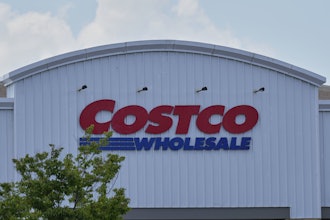As if American food manufacturers didn’t already face enough challenges — competing in a disproportionate global marketplace during a historic economic downturn, not to mention the scrutiny of an aggressive and rapidly growing regulatory regime1 — they now face a barrage of lawsuits from a growing number of creative and well-funded trial lawyers who see food and beverage manufacturers as their next big target2.
Only a very small portion of this litigation actually relates to manufacturing defect claims allegedly resulting in consumer injuries or death, such as with salmonella outbreaks. Rather, the bulk of the litigation is focused on alleged “false advertising” associated with food labeling. The suits are often brought as class actions under the umbrella of loosely interpreted state consumer protection statutes.
What is their beef? Notably, they are not claiming that consumers are in some sort of significant health danger akin to lung claims associated with smoking tobacco. Instead, they essentially say that the health benefits touted on the food labels and packaging — for example, statements and pictures indicating “all natural,” “low sodium,” “100% pure,” “heart healthy,” “cholesterol free”3 — are misleading to consumers.
Household names such as Campbell’s Soup, Cheerios, Hershey’s, and Snapple have been targeted, but any food manufacturer may find itself in the crosshairs. Aggressive defenses against these claims have been asserted, however, and a basic understanding of the primary defenses currently being used by manufacturers is critical for combating them head-on and minimizing their potential impact on a company’s productivity and reputation.
Available Defenses
1. Are the Claims “Preempted”?
One of the primary defenses to a false labeling claim is that the claim is preempted by federal laws and regulations, such as the Federal Meat Inspection Act (FMIA); the Poultry Products Inspection Act (PPIA); the Federal Food, Drug, and Cosmetic Act (FDCA); the Nutritional Labeling and Educational Act (NLEA); and various regulations promulgated by the FDA and the USDA. These laws provide nationwide standards for food labels, including images and wording requirements. As such, manufacturers correctly argue that any state-law claim challenging such labels should be preempted4. In short, the strength of a preemption defense depends in part on the type of label being challenged, whether or not that label is directly governed by statute or regulations. If the label is directly governed by a regulation and if the label is in compliance with the regulations, a claim challenging the label will likely fail5.
2. Is The FDA Currently Evaluating the Label?
If the FDA is currently evaluating the specific labeling issue being challenged by the plaintiffs, manufacturers have argued, with some success, that the court should stay or dismiss the litigation until the FDA promulgates final regulations.
3. Does the Plaintiff Have Standing?
California and New Jersey, have seen an explosion of food labeling-related class actions brought under liberally construed consumer protection and false advertising statutes6. Defendants have argued, with little success to date, that the class plaintiff cannot bring the suit because he or she either did not purchase the product and/or did not rely on the label when purchasing the food product.
4. Is the Complaint Sufficient?
A routine method to test the sufficiency of a claim in federal court is to file motion arguing that the complaint fails on its face (i.e., it fails to state a claim). For example, in Rooney v. Cumberland Packing Corp.7, the plaintiffs alleged that “Sugar in the Raw” was misleading consumers under California’s consumer protection laws by leading people to believe the product does not contain refined sugar. The District Court dismissed the claim, finding that the defendant’s packing did not state the sugar was “unprocessed” or “unrefined.” The Court was also persuaded by the defendant’s submission of color reproductions of the defendants’ advertisements and materials. The Court also cited to the fact that the defendants’ trademark has been in use without contest for longer than four decades.
Although the threat of filing a such a motion has not slowed down the onslaught of food labeling claims, the motion remains a critical tool in the defendants’ arsenal.
5. What Are the Damages?
It is difficult for plaintiffs to show that they actually suffered any measurable harm from the alleged “deceptive” label. However, plaintiffs have created various damages theories because if they can survive a dispositive motion on any one theory, damages can quickly add up given that the claims are typically brought as class actions.
For instance, in In Re: Cheerios Marketing and Sales Practice Litigation8 the proposed class plaintiffs alleged that General Mills’ “Cheerios” labels were deceptive in that the labels suggested that eating the cereal helps lower cholesterol. The District Court of New Jersey refused to dismiss the claim at the pleading stage and directed limited discovery as to whether the plaintiffs suffered any cognizable harm. Plaintiffs’ damages theories were “return of purchase price refunds,” “benefit of the bargain” damages, and “disgorgement of profits.” After taking depositions of various proposed class plaintiffs, General Mills moved for summary judgment. With regard to the return of the purchase price theory, the court found that plaintiffs could not show that the product was “essentially worthless.” As for the benefit of the bargain theory, the court found that plaintiffs could not show they were induced by the labeling when purchasing the product and were unable to show an actual difference in value between the product promised and the one they received.
Conclusion
The rise of food labeling litigation surely presents legal challenges for the American food manufacturer. However, these legal challenges are defensible. Indeed, vigorously asserting all available defenses to these claims will not only greatly reduce any potential exposure to the manufacturer, it will hopefully result in a reduction in the rate at which the claims are being filed.
Andrew J. Scholz ([email protected], Matthew R. Shindell ([email protected]), and Matthew D. Cabral ([email protected]) are attorneys in the Product Liability Practice Group at Goldberg Segalla LLP. The firm has extensive experience counseling and representing clients with respect to the labeling, packaging, marketing, and advertising of a wide range of products.
1See Sarah Roller and Raqiyyah Pippins, “Marketing Nutrition & Health-Related Benefits of Food & Beverage Products: Enforcement, Litigation & Liability Issues,” 65 Food Drug L.J. 447 (2010).
2See, e.g., Stephanie Strom, “Lawyers from Suits Against Big Tobacco Target Food Makers,” New York Times (Aug. 18, 2012) (available at www.nytimes.com/2012/08/19/business/lawyers-of-big-tobacco-lawsuits-take-aim-at-food-industry.html); and “Food Labeling Lawsuits Fill Up Court Dockets,” Rockland County Times website (Oct. 18, 2012) (available at http://www.rocklandtimes.com/2012/10/18/food-labeling-lawsuits-fill-up-court-dockets/).
3Cox v. General Mills, Inc., 3:12 CV 06377 (N.D.Ca.) (steamers not “all natural”); Kosta v. Del Monte Corp., 12 CV 1722 (N.D.Ca.) (“natural” label misleading since preservatives added); Sovocool v. Coca Cola, 12 CV 2064 (N.D. Ca) (orange juice purportedly not “pure, natural orange juice” as labeled); Trammal v. Barbara’s Bakery, Inc., No. 12 CV 2664 (N.D. Ca.) (“all natural” misleading); Lanavaz v. Twinings North America, Inc., No. 12 CV 2646 (N.D. Ca.) (antioxidant claims in tea misleading); Wilson v. Frito-Lay North America, Inc., 12 CV 1586 (N.D. Ca) 12 CV 1586 (trans fat labeling misleading); Anderson v. Starbucks, No BC485458 (Cal. Super. Ct., L.A. Co.) (Starbucks beverage dyed with insect extract); Hawkins v. General Mills, 12 CV 3306 (C.D.Ca.) (“Greek” yogurt falsely labeled).
4See 21 U.S.C. § 343-1(a)(1)–(5) (express preemption clauses).
5Holk v. Snapple, 575 F.3d 329 (3d Cir. 2009) (“all natural” claim); Khasin v. The Hershey Company,5:12-cv-01862, 2012 U.S. Dist. LEXIS 161300 (N.D. Cal. Nov. 9, 2012) (N.D.Ca); Chacanaca,752 F. Supp. 2d 1111, 1118 (N.D.Ca. 2010) (no preemption “[u]ntil the agency brings ‘front of the box’ symbols and photographs into its regulatory ambit”); Wright v. General Mills Inc., 2009 WL 3247148, at *3 (S.D. Cal. Sept. 30, 2009) (no preemption since “FDA has deferred taking regulatory action”); Fellner v. Tri Union, 539 F.3d 237, 255 (unregulated food warning claim not preempted) Ackerman v. Coca-Cola Co., No. CV-09-0395, 2010 WL 2925955 (E.D. N.Y. July 21, 2010); Mason v. Coca-Cola Co., 2010 WL 2674445, at *3 (D.N.J. June 30, 2010) (allegedly false statement of ingredients related to Diet Coke Plus); Chavez v. Blue Sky Natural Beverage Co., 268 F.R.D. 365, 371-72 (N.D. Cal. 2010) (allegedly false statement of origin); Vermont Pure Holdings, Ltd. v. Nestle Waters, 2006 WL 839486, at *5-6 (D. Mass. March 28, 2006) (alleged violation of spring water source regulation); Smajlaj v. Campell Soup, 782 F. Supp.2d 84 (2011); Turek v. General Mills., Inc.,2011 U.S. App. LEXIS 20959 (7th Cir. 2011) (fiber statements); Pom Wonderful LLC v. Coca Cola, 679 F.3d 1170 (9th Cir. 2012) (juice label); Carrea v. Dryer’s Grand Ice Cream, No. 11-15263 (April 5, 2012); Lateef v. Pharmavite, 12-cv-05611 (N.D.Il. Oct. 24, 2012) (dismissing class action complaint related to food supplement label since directly governed by FDA regulations); Peviani v. Hostess Brands,2010 WL 4553510, at *6 (C.D. Cal. Nov. 3, 2010) (trans fat label claims directly preempted); Henderson v. Gruma Corp., CV 10-04173, 2011 WL 1362188, at *13 (C.D. Cal. Apr. 11, 2011) (trans-fat/cholesterol statements).
6See In Re Tobacco II Cases, 46 Cal. 4th 298, 311 (2009); Cal. Bus. & Prof. Code § 17500; Farmers Ins. Exch. v. Superior Court, 2 Cal. 4th 377, 383 (1992); Strawn v. Canuso, 140 N.J. 43, 68 (1995); Brod v. Sioux Honey Ass'n Coop., 2012 U.S. Dist. LEXIS 129391 (N.D. Cal. Sept. 11, 2012); Hemy v. Perdue Farms, 2011 U.S. Dist. LEXIS 137923 (D.N.J. Nov. 30, 2011).
712 CV 0033 (S.D.Ca. April 16, 2012).
8MDL Docket No. 2094, 2012 U.S Dist. LEXIS 128325 (Sept. 10, 2012).



















